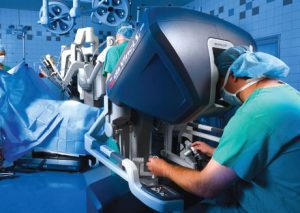


robotic gallbladder surgery — a safer, minimally invasive procedure offering greater precision, faster recovery, and reduced scarring.
Gallbladder diseases such as gallstones and inflammation often require surgical intervention. Traditionally, these procedures have been done through open surgery or laparoscopic methods. However, with advancements in medical technology, robotic gallbladder surgery is emerging as a cutting-edge alternative that offers greater precision, fewer complications, and faster recovery times. This article explores everything you need to know about robotic gallbladder surgery — how it works, its benefits, and what to expect before and after the procedure.
Robotic gallbladder surgery, also known as robot-assisted cholecystectomy, is a minimally invasive procedure used to remove the gallbladder using robotic technology. This procedure is performed by a surgeon who controls a robotic system, typically the da Vinci Surgical System, to make small incisions and carry out the surgery with enhanced accuracy and flexibility.
The robotic system provides a high-definition, 3D view of the surgical area and uses robotic arms equipped with specialized surgical instruments. These arms mimic the surgeon’s hand movements in real time but with greater precision and stability.
The gallbladder may need to be removed if you suffer from:
Gallstones (Cholelithiasis) causing pain or infection
Chronic gallbladder disease
Gallbladder inflammation (Cholecystitis)
Gallbladder polyps
Biliary dyskinesia (poor gallbladder function)
Removal of the gallbladder (cholecystectomy) is a common and safe procedure, especially with minimally invasive techniques like robotic surgery.
You will be given general anesthesia before the procedure. A few small incisions (usually 1 to 4) are made in your abdomen.
A robotic surgical system is docked to the incisions, and miniature instruments along with a 3D camera are inserted.
The surgeon sits at a console, viewing a magnified, high-definition 3D image of your internal organs. Using hand and foot controls, the surgeon manipulates the robotic arms to carefully remove the gallbladder.
Once the gallbladder is removed, the instruments are withdrawn, and the incisions are closed with sutures or surgical glue.
Robotic surgery offers several advantages over traditional open and standard laparoscopic surgery:
The robotic system filters out any hand tremors, providing unmatched control and accuracy during delicate movements.
Minimally invasive incisions result in reduced pain, minimal blood loss, and lower risk of infection.
Most patients experience a shorter hospital stay and can return to normal activities faster compared to open surgery.
Due to the small incisions, scarring is minimal and cosmetically favorable.
The 3D high-definition view helps the surgeon navigate complex anatomical structures more safely.
You may be a good candidate if:
You have symptomatic gallstones or gallbladder disease.
You are in generally good health and can tolerate anesthesia.
You prefer a minimally invasive approach with faster recovery.
However, not all patients are suitable for robotic surgery. Severe infections, prior abdominal surgeries, or certain complications may necessitate open or traditional laparoscopic surgery instead. your best gallbladder stone surgeon near me will help determine the best approach for you.
As with any surgery, robotic gallbladder removal carries some risks, including:
Infection at the incision site
Bleeding
Injury to nearby organs (such as the bile duct or liver)
Blood clots
Adverse reactions to anesthesia
However, complication rates are generally low, and robotic assistance often reduces the likelihood of surgical errors.
The cost of robotic gallbladder surgery in India — particularly in major cities like Delhi — typically ranges from ₹2,00,000 to ₹3,50,000, depending on:
Hospital and surgeon fees
Duration of hospital stay
Type of insurance coverage
Complexity of the case
Though robotic surgery is more expensive than conventional methods, many patients find the benefits in comfort, safety, and speed of recovery well worth the investment.
Most patients can go home the same day or within 24 hours. Full recovery usually takes about 1–2 weeks. Here’s what to expect:
Mild abdominal discomfort for a few days
Resume light activities within 48–72 hours
Return to work in 5–7 days for most people
Avoid heavy lifting for 2–4 weeks
Your doctor will give specific guidelines for medications, diet, and activity based on your health and healing progress.
If you’re dealing with gallbladder issues and want a minimally invasive solution, consult a qualified surgeon or gastroenterologist to determine if robotic surgery is right for you.
